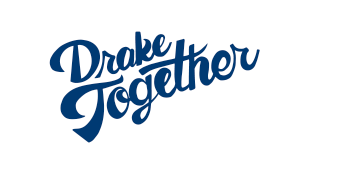With 88.8% of students staying on for a second year, Drake University has among the highest freshman retention rates in the country.

Drake University maintains a consistently high one-year retention rate for entering first year students. Over the past five years, the one-year retention rate averaged 87%. In 2011, which is the most recent comparative data available, Drake had an 88% retention rate, which was higher than the average for private four-year institutional (80.8%) and all four-year institutions (78.8%).
However, there is still room for improvement. Compared to our peer institutions, Drake ranks 13th of 23 institutions on first to second year retention (3-year average). More importantly, the percent of students who complete a degree at Drake is directly related to our one-year retention rate, making students’ first year a critical point in their long-term success at Drake.
While the overall one-year retention rate is high, there are several student groups that experience lower retention rates. Groups with historically lower retention rates include African American students, students who do not attend registration, and students who live off campus.

Groups with historically lower retention rates include African American students, students who live off-campus their first year, and students who do not attend orientation. Contrary to common assumptions, students who do not return have a strong academic profile (ACT, high school GPA) and often perform well academically.
There are several current initiatives designed to support students with historically lower retention rates.
Crew Scholars
This program aims to improve the retention of domestic students of color by recruiting in cohorts called crews. The Crew Scholars program has two main components: (1) recruiting in cohorts and (2) instituting extensive support programming for students before semester one, with intense mentoring and support taking place during year one and mentoring continuing throughout year two and beyond. For more information about this program, please visit the website here and/or contact Bryan Thomas.
Proactive Advising
A pilot group of faculty engaged in outreach activities to connect with participants, share information about campus resources, and provide advice on strategies for academic success. For more information regarding academic success, please visit the website here and/or contact Bryan Thomas.
Understanding the Retention Puzzle
In an effort to examine factors related to retention, a recent analysis explored the correlation of several predictor variables with one-year retention (e.g., gender, race, citizenship, state residence, ACT score, high school GPA, athlete, campus residence, orientation attendance, fraternity or sorority membership, and one-year Drake GPA).
Similar to national studies, these variables were not powerful predictors of retention. Students’ experiences at the institution (engagement with faculty, sense of belonging, connection with the institution) are variables that national research points to as important variables related to retention.
We know that attitude matters. National research and current best practices include more attention to a range of measures that explore students’ self-perceptions and attitudes. Drake students who do not return rate themselves lower on social comfort, confidence of success, sense of belonging, and feelings of social support.
While there is a consistent one-year departure rate of 13%, additional students leave Drake after two years (6%), three years (2%), and four years (2%).

Several students decide to leave Drake after starting their second year. On average, an additional 10% of an entering cohort will leave. Initial analysis indicates that factors related to one-year retention continue to influence departure trends (e.g., students of color, campus residence).
We can follow a cohort of students to gain insight into progress and completion.

We can track student movement across postsecondary institutions to provide a more complete picture of undergraduate student progress and completion. For the 2006 cohort, 2% of students graduated from another institution and 3% of students were enrolled at another institution. Readers will note that 13% of the 2006 cohort did not continue to seek a degree after leaving Drake.
Drake participates in the National Student Clearinghouse, which supports the ability to track postsecondary enrollment of individuals who leave Drake.
We point out the following trends in the subsequent enrollment information:
• For students who attend another institution, a majority attend a public institution (over 75% for each year).
• A majority of students who attend another institution select an institution in their home state.
• Top institutions the 2011 cohort of non-returns enrolled include Iowa State University (n = 11), University of Iowa (n = 5), and Kansas State University (n = 3)
• Top institutions the 2012 cohort of non-returns enrolled include Iowa State University (n = 9), University of Minnesota (n = 6), University of Iowa (n = 5), and Des Moines Area Community College (n = 4)
We know several factors that influence retention at Drake including orientation attendance, campus residence, and race. In addition, we know that students’ connection to the academic and social environment is critical.
Each of us can make a difference in student persistence and success. We encourage you to review this information, connect with current initiatives, and suggest additional ways to enhance student success at Drake.
The Office of Institutional Research & Assessment can be reached via email at oira@drake.edu.

